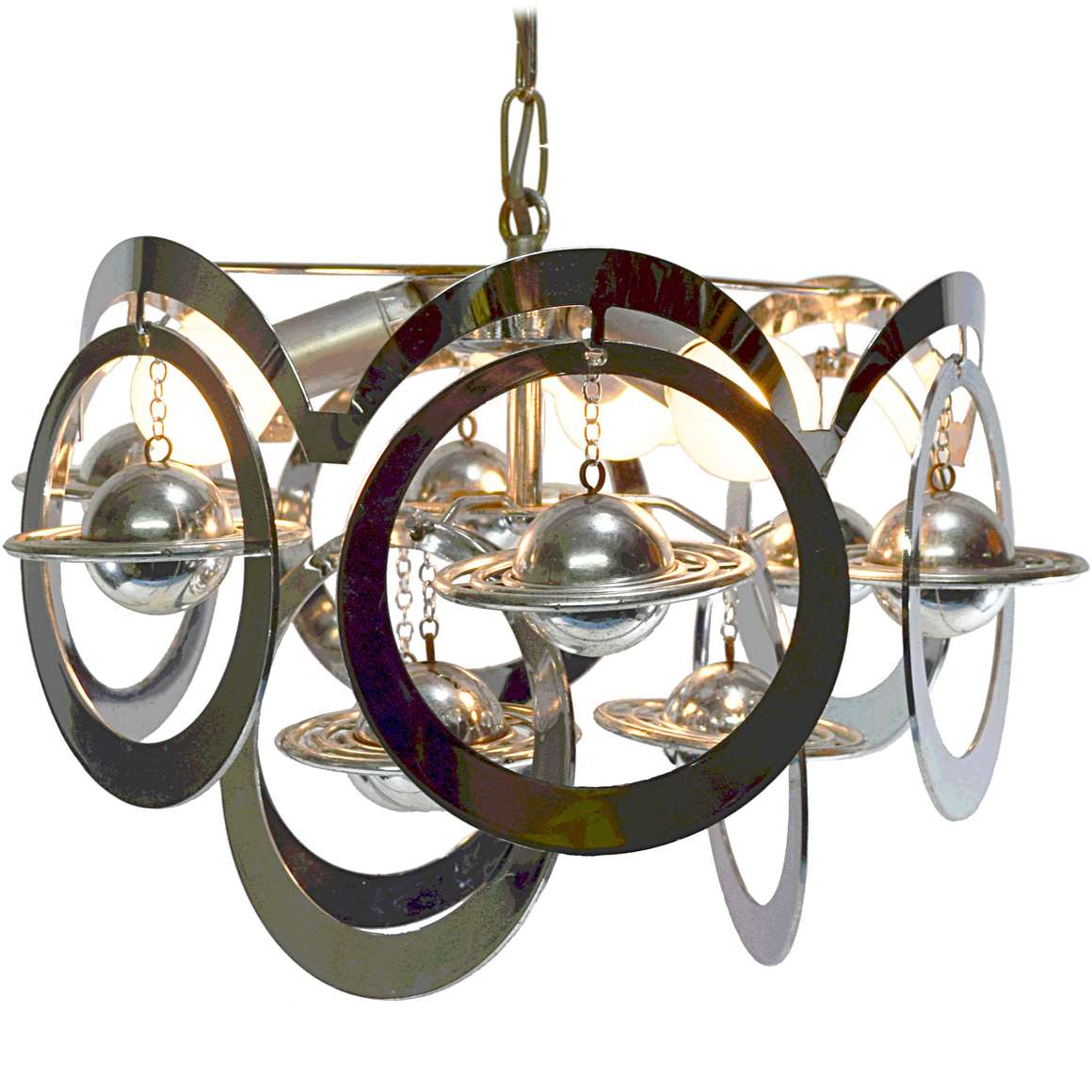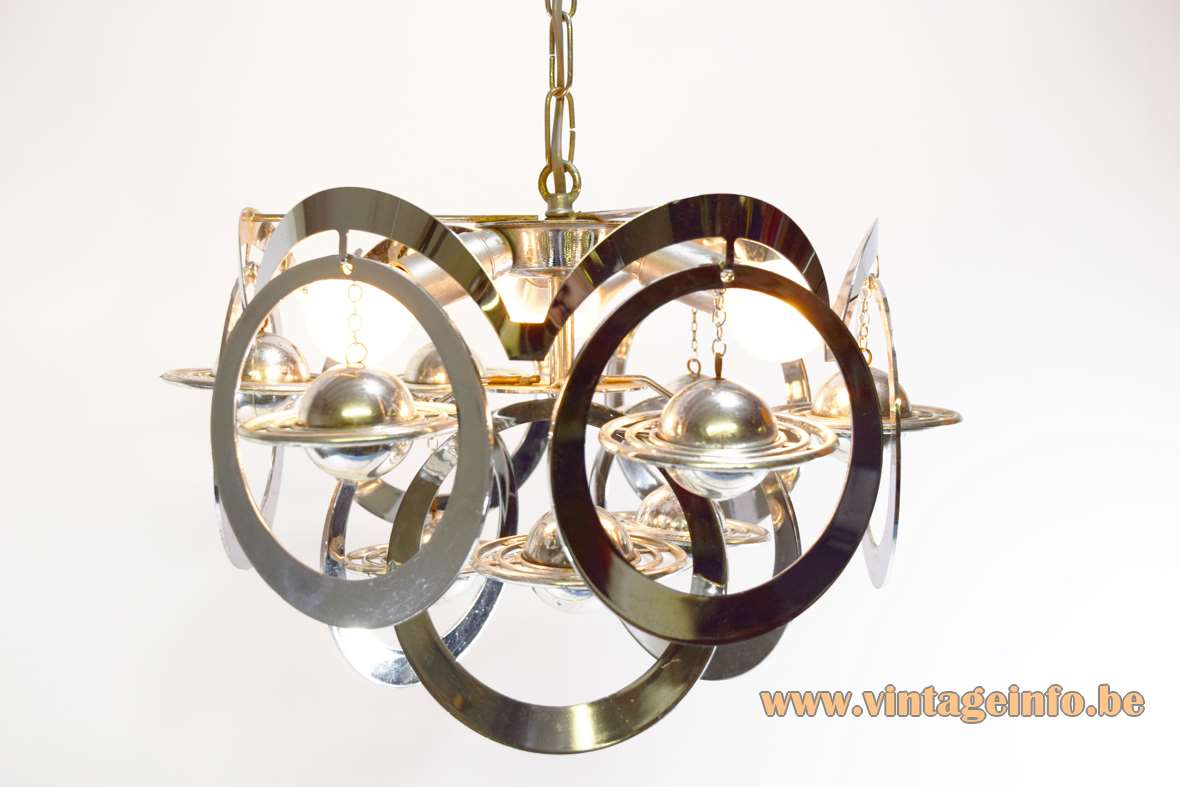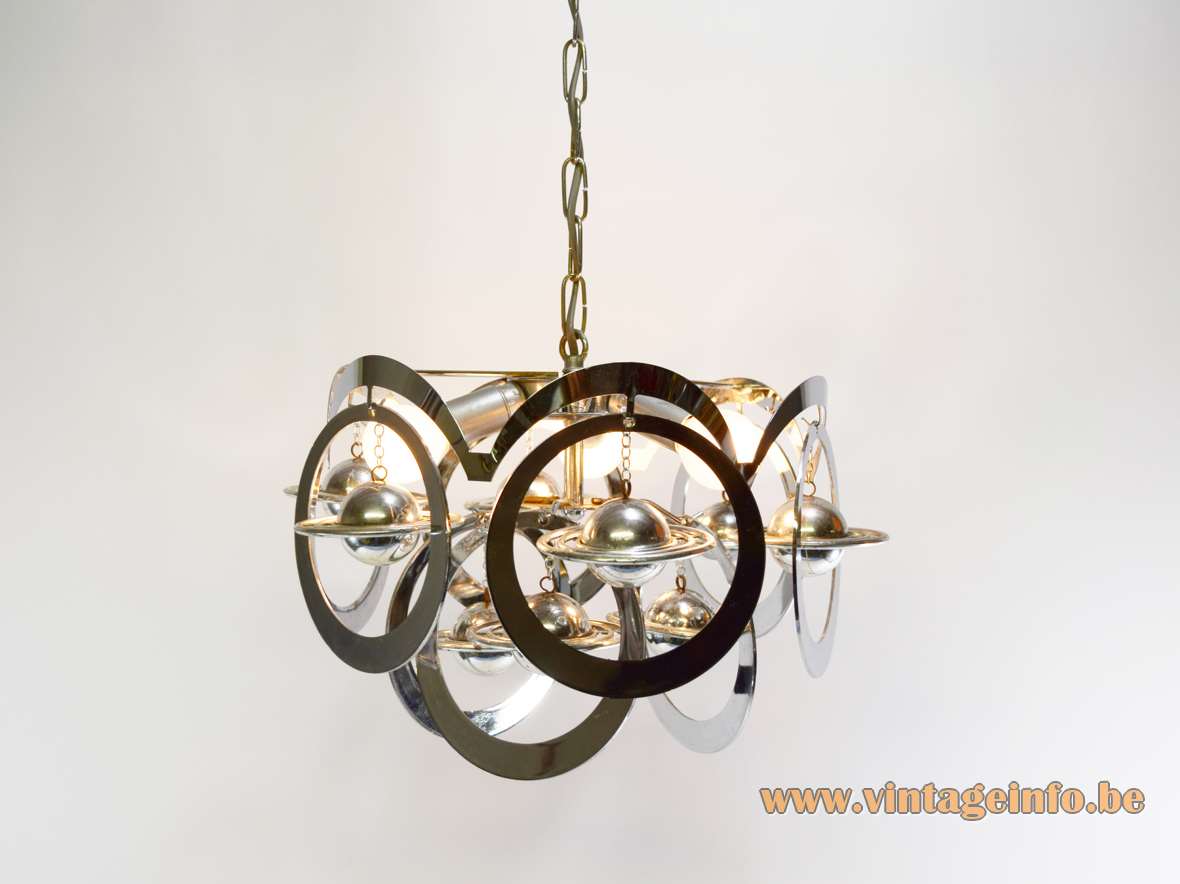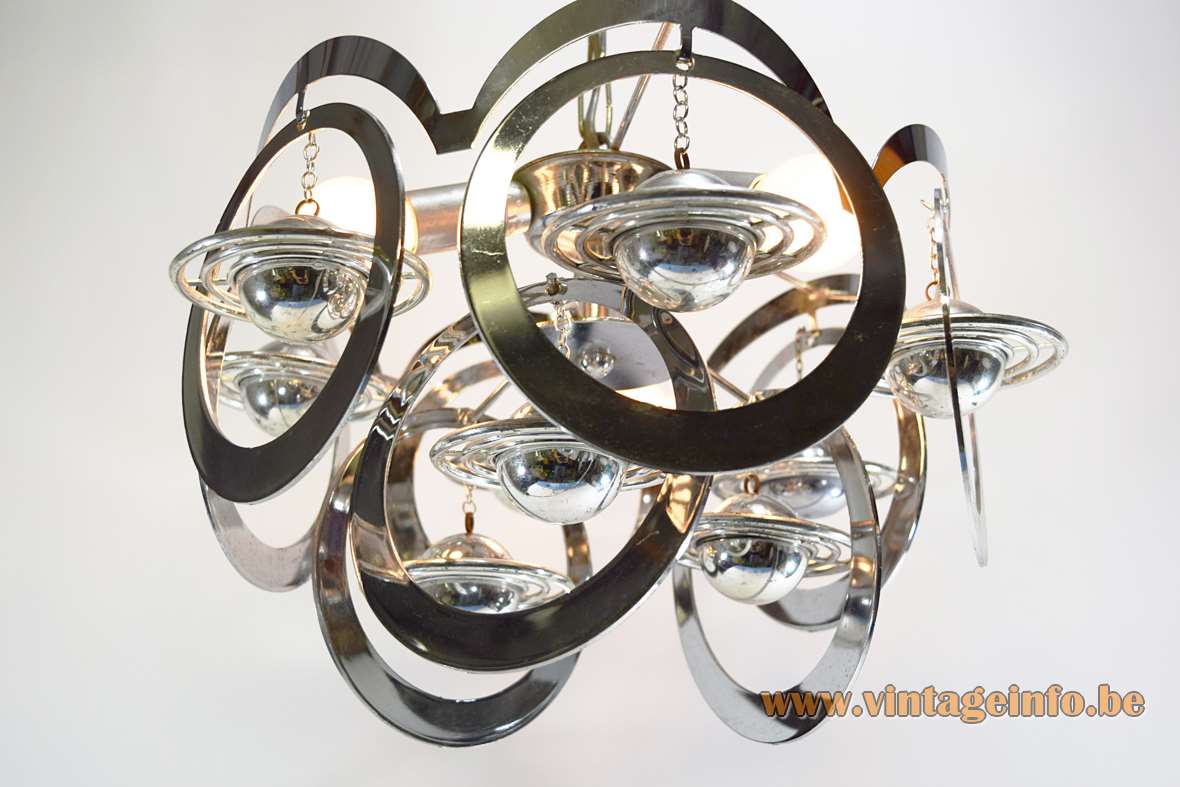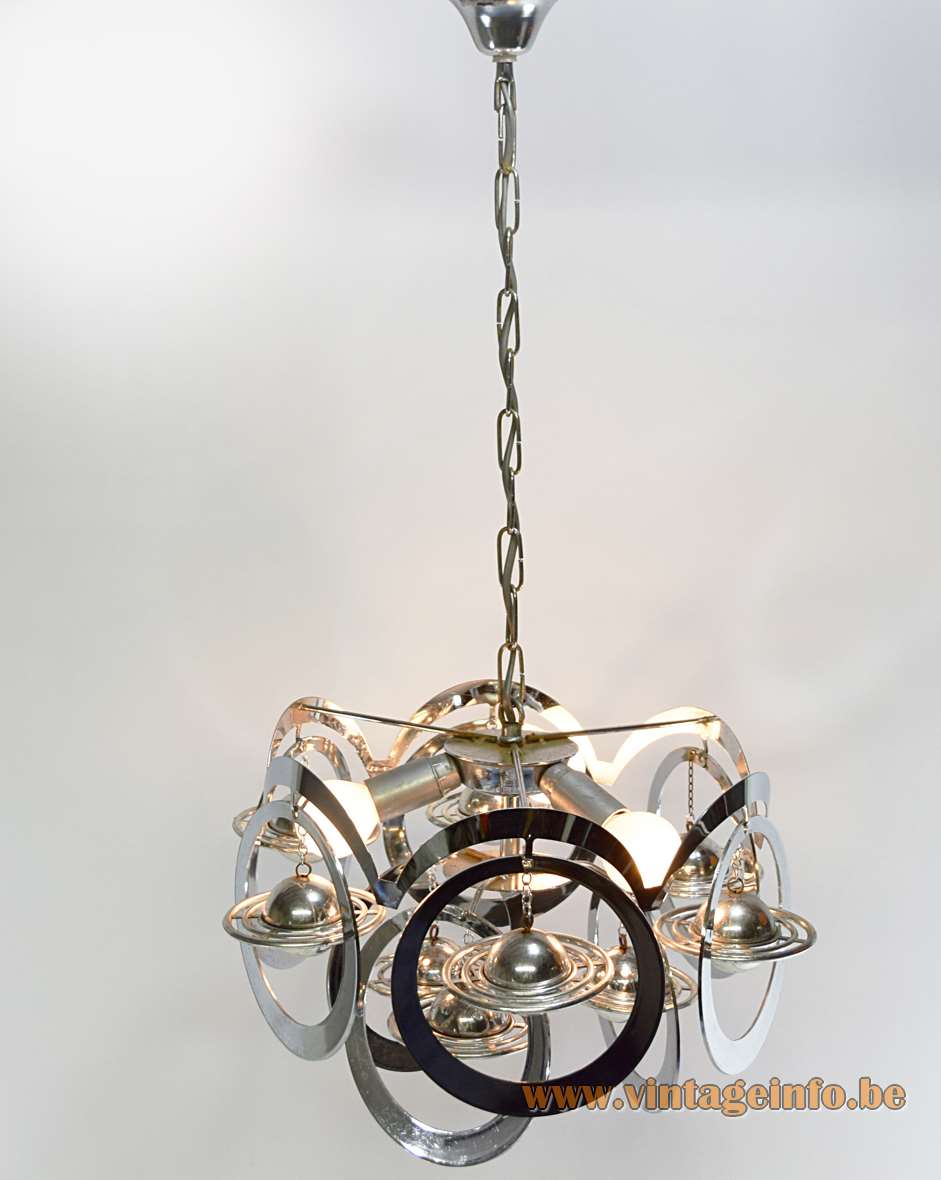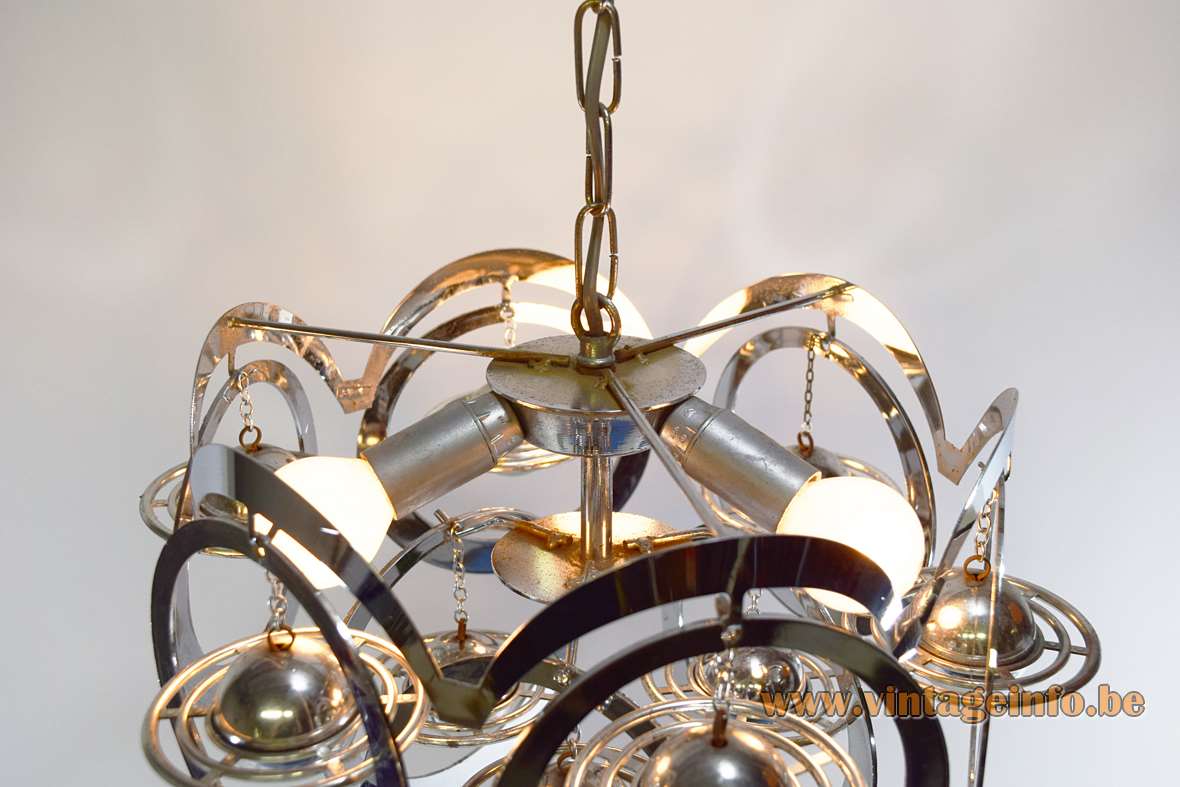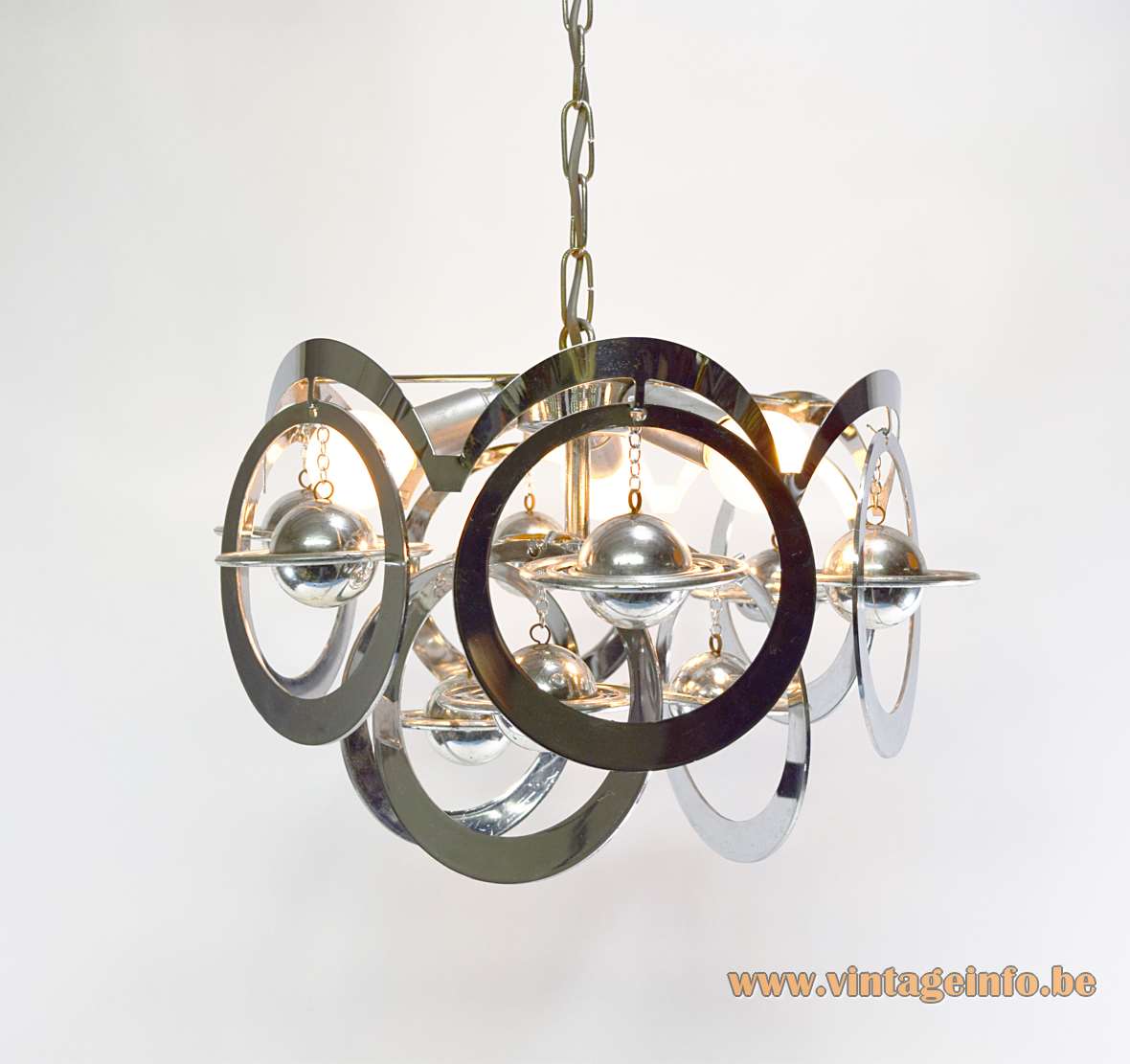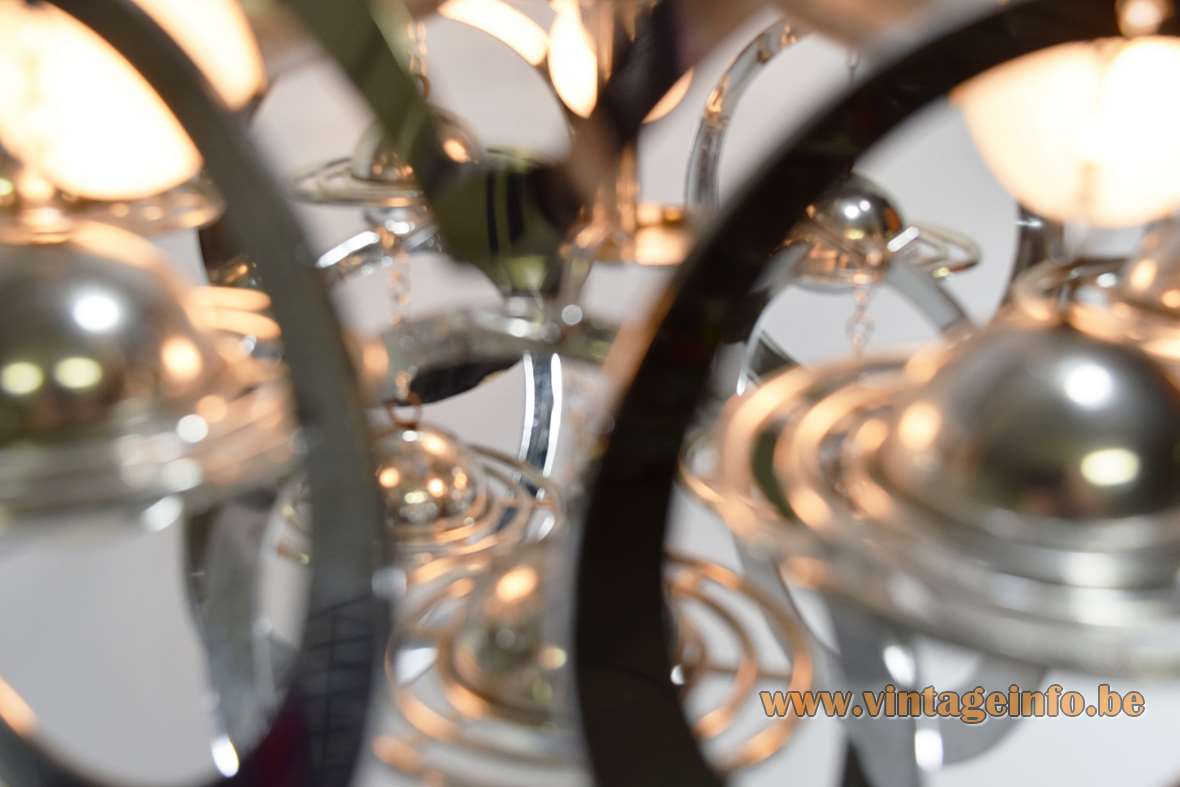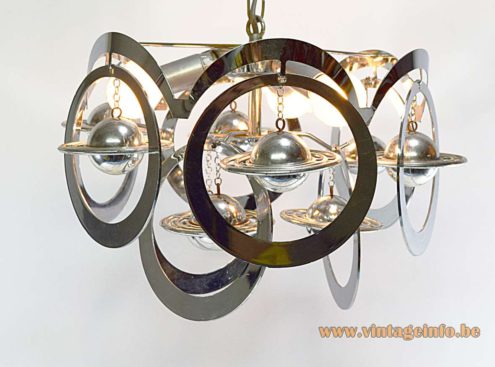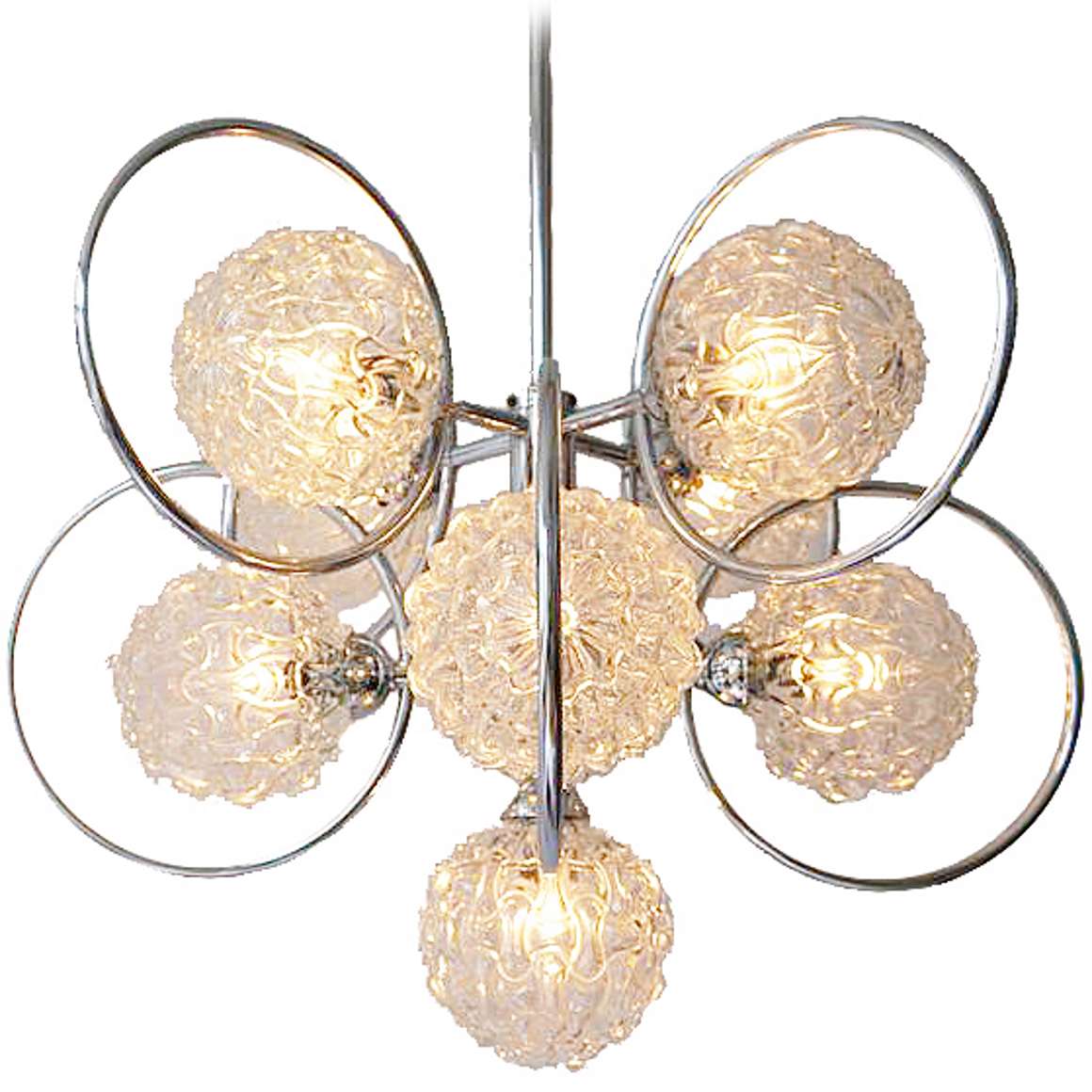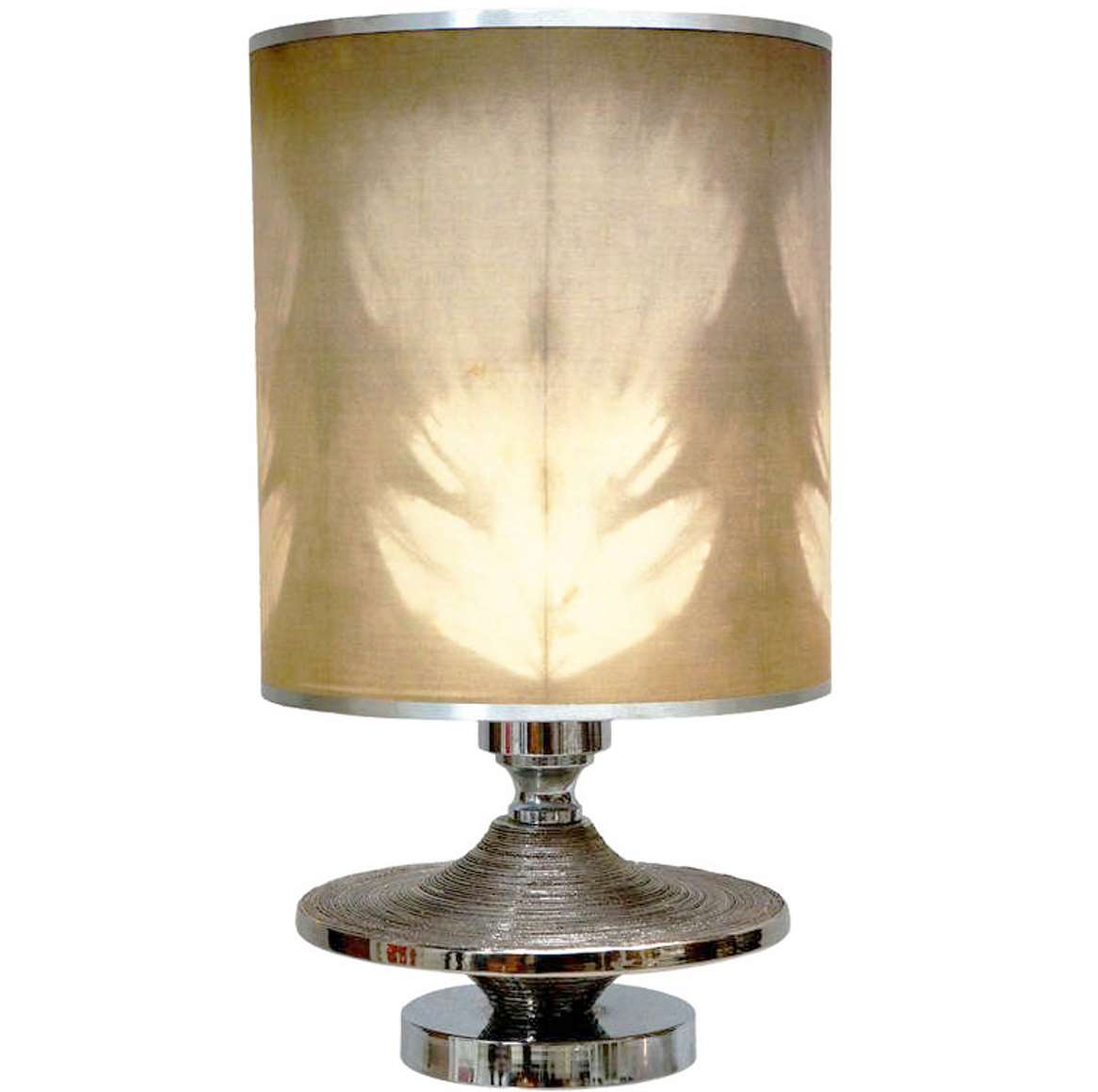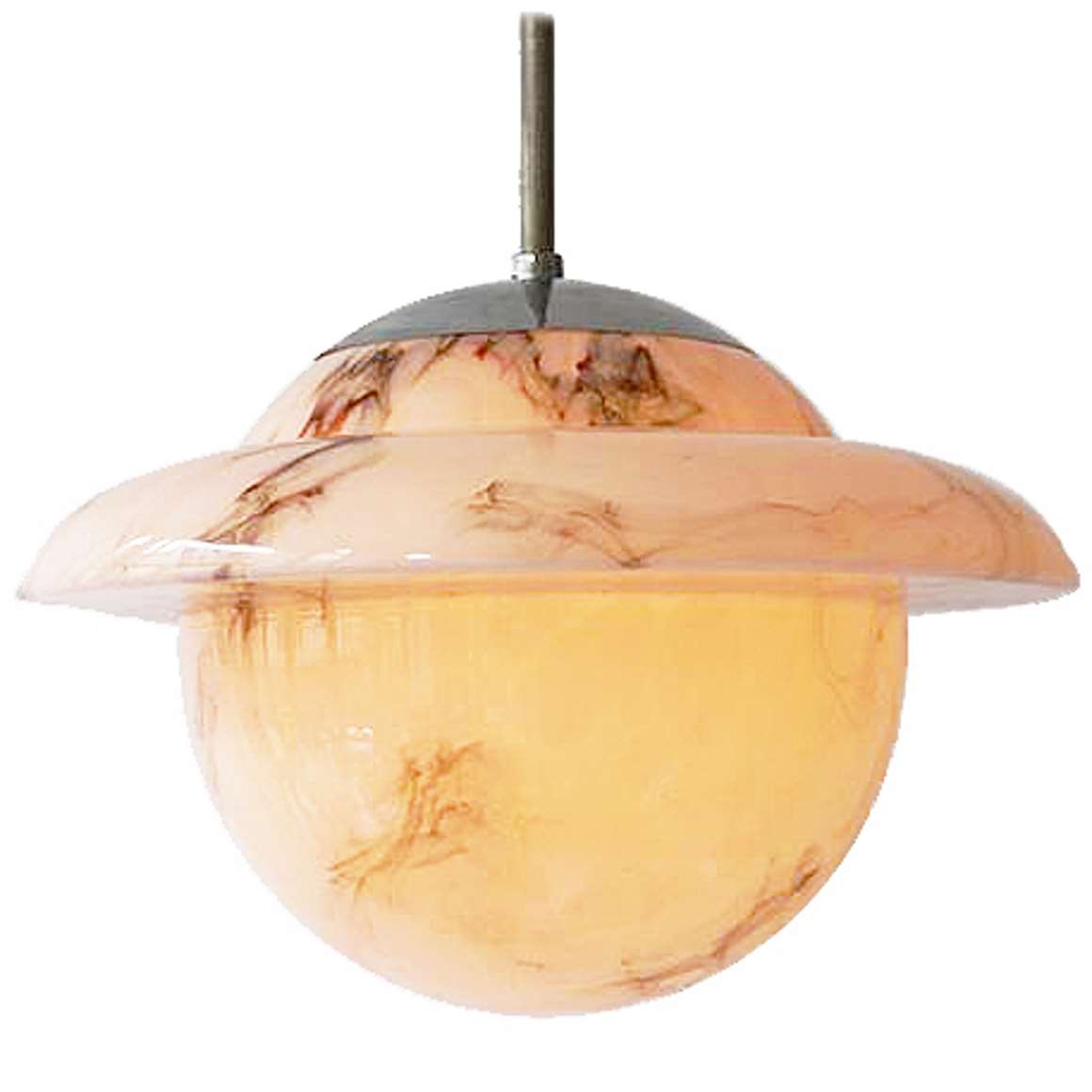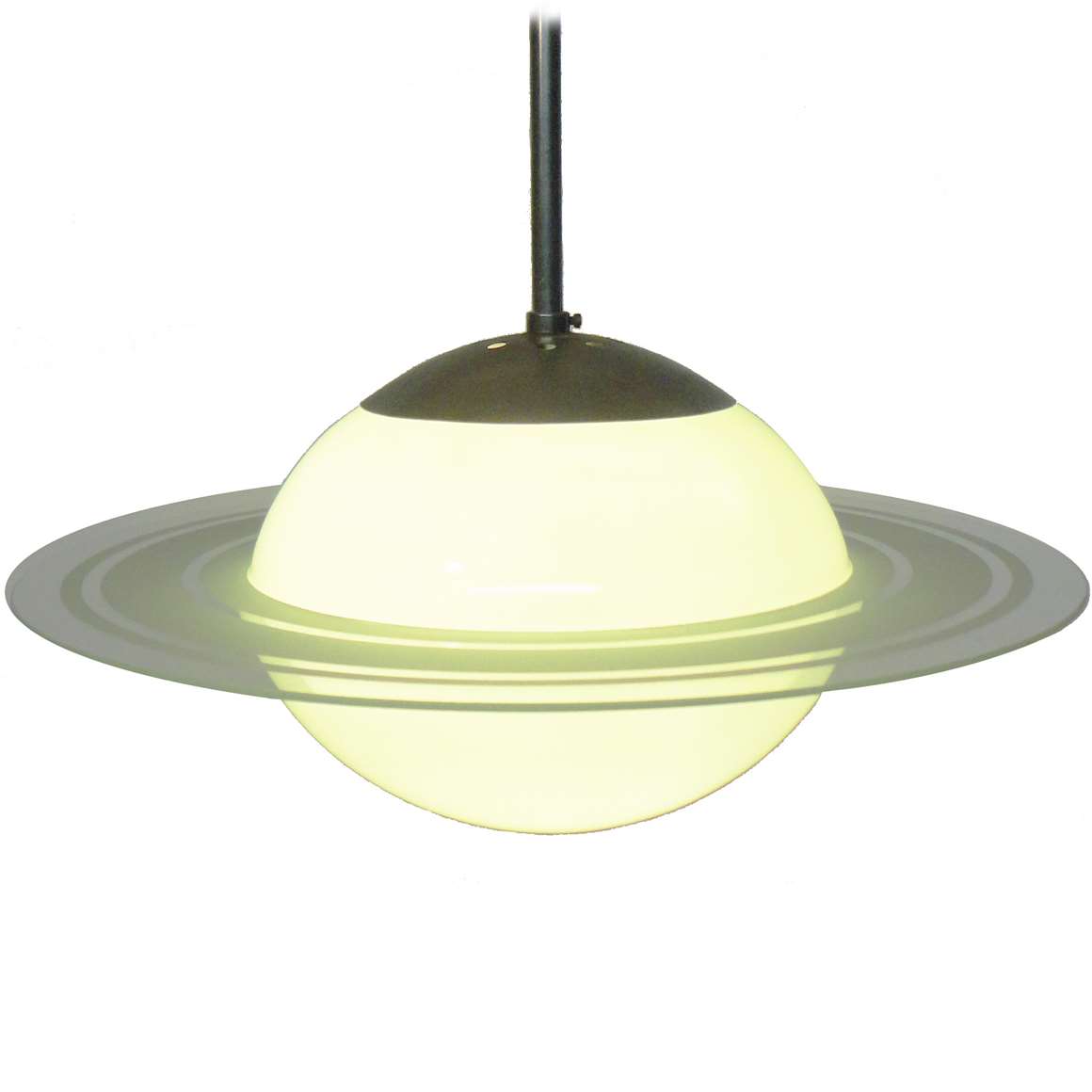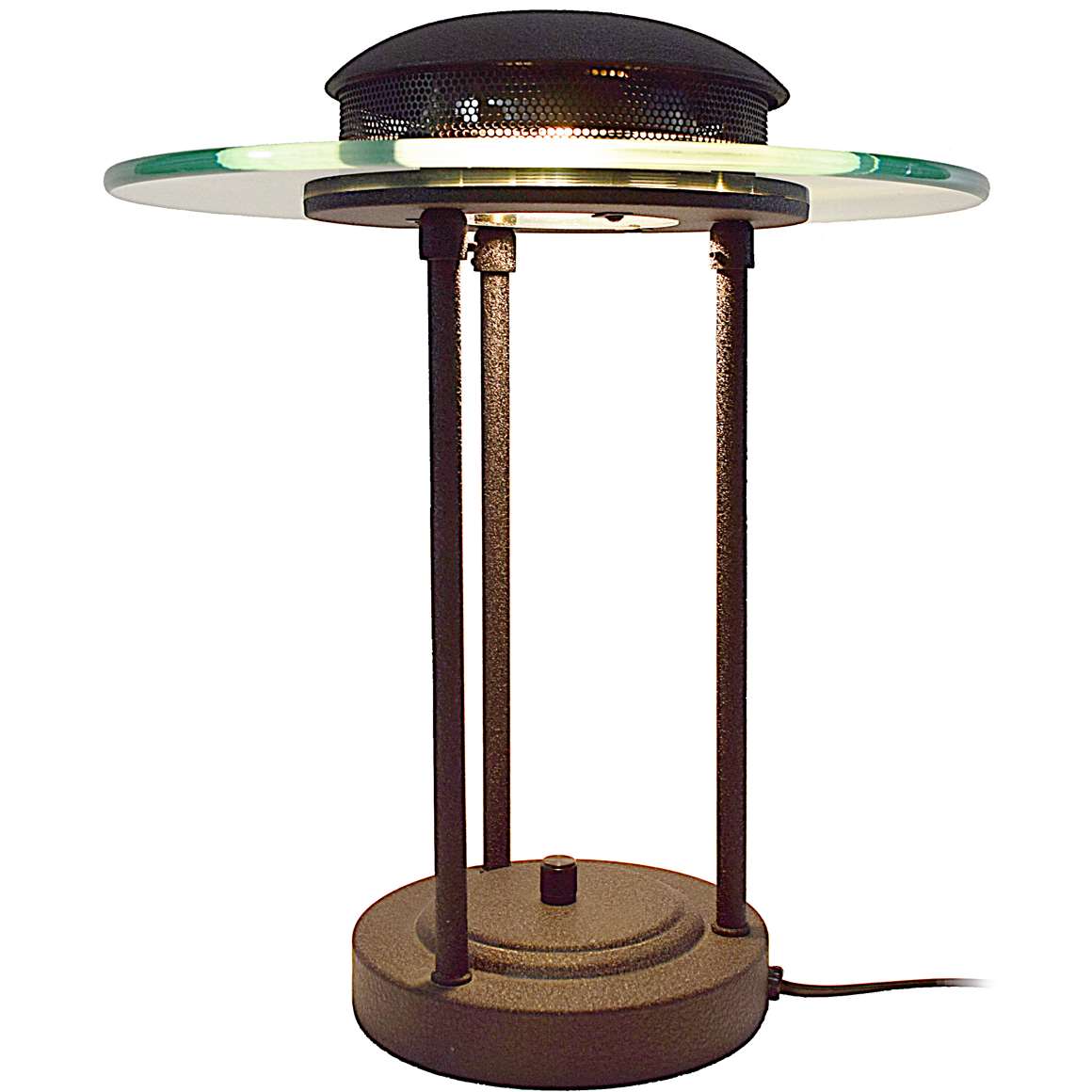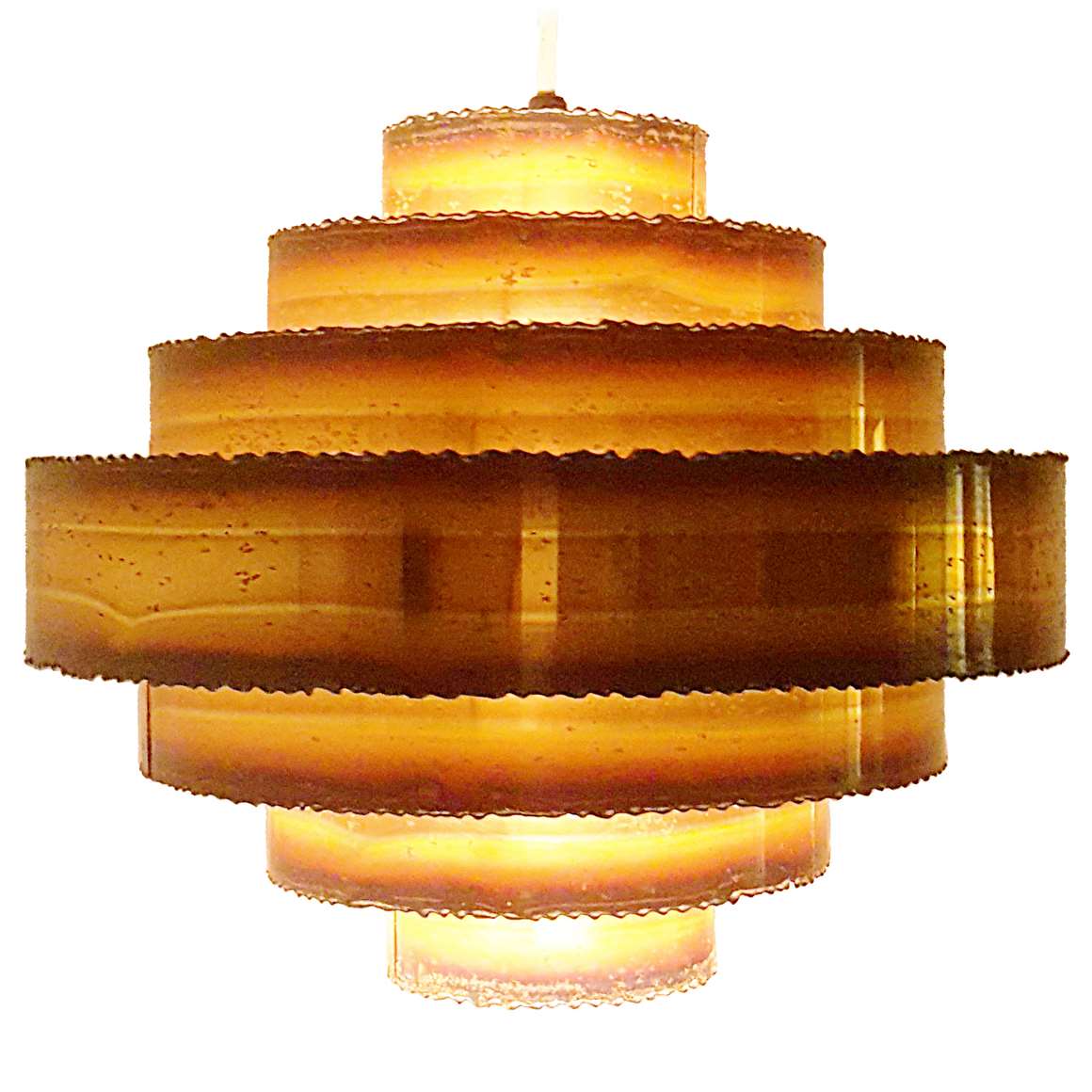1960s Chrome Saturn Chandelier
Materials: Chromed metal (iron) rings and parts. Chromed plastic planets. Chrome chain and canopy. Small chrome chains for the planets. 3 Bakelite E14 sockets.
Chain length: 60 cm / 23.62”
Height: 25 cm / 9.84”
Width: ∅ 37 cm / 14.56”
Electricity: 3 bulbs E14, 3 x 60 watt maximum, 110/220 volt.
Any type of light bulb can be used, not a specific one preferred.
Period: 1960s – Mid-Century Modern.
Designer:To be appraised.
Manufacturer: To be appraised.
Other versions: This 1960s chrome Saturn chandelier was made with 3, 4, 5 and 12 lamps and was also completely made in chromed metal. It was probably produced by several companies. Unfortunately there is never a label present. Often named Sputnik lamps, but that’s something else. Sputnik lamps are lamps with rods and light bulbs pointing in every direction, also named starburst lamps.
Space Age
These chandeliers and other lamps referring to space travel became very popular during the Space Age (late 1950s – 1960s). You can find several examples on Vintageinfo. The Space Age is generally considered to have begun with the Sputnik Satellite in 1957. The Sputnik was the first artificial Earth satellite.
The Soviet Union launched it into orbit on 4 October 1957 from the Baikonur Cosmodrome in the desert steppe of Baikonur. The satellite was visible around the Earth and its radio pulses were detectable.
The Russian cosmonaut Yuri Alekseyevich Gagarin (9 March 1934 – 27 March 1968) was the first human to journey into outer space, when his Vostok spacecraft completed an orbit around the earth on 12 April 1961.
Saturn chandeliers have been around since the beginning of electric lighting. Many were produced during the Art Deco (Bauhaus) period. One of the most famous Saturn chandeliers dates from the 1930s. It was designed by Gio Ponti and Pietro Chiesa for Fontana Arte and made in glass and chromed metal. Also Edvard Hald made a chandelier for Orrefors from Sweden, also in the early 1930s and also in glass.
Links (external links open in a new window)
Cosmonaut and astronaut – Wikipedia
The Sputnik 1 Satellite – Wikipedia
The Sputnik crisis – Wikipedia
Yuri Alekseyecich Gagarin – Wikipedia
History of rockets – Wikipedia
Soviet space program – Wikipedia
The Baikonur Cosmodrome – Wikipedia
Russian Space Web, a website by Anatoly Zak, a Russian space historian and journalist.
The Soviet Space Program on the website of the CIA.
